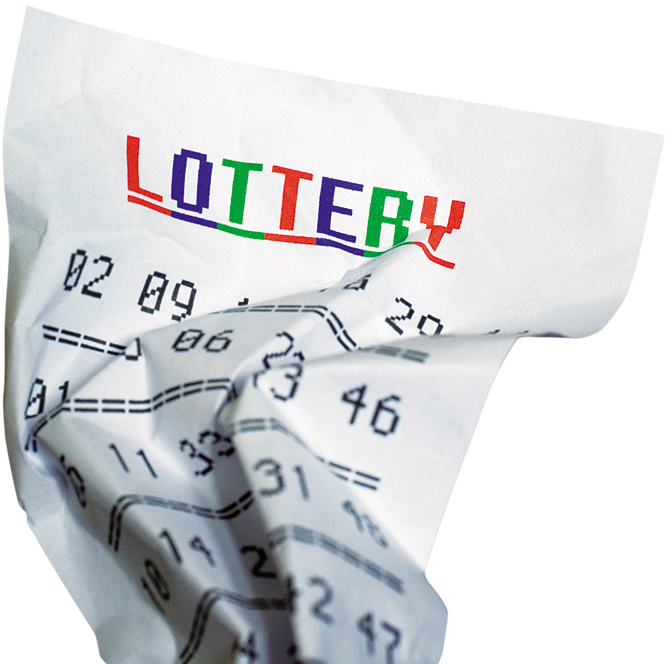The Concept of Present Value
Individuals often face financial decisions that will have consequences long into the future. For example, when you decide to attend college, you are committing yourself to years of study, which you expect will pay off for the rest of your life. So the decision to attend college is a decision to embark on a long-
The basic rule in deciding whether or not to undertake a project is that you should compare the benefits of that project with its costs, implicit as well as explicit. But making these comparisons can sometimes be difficult because the benefits and costs of a project may not arrive at the same time. Sometimes the costs of a project come at an earlier date than the benefits. For example, going to college involves large immediate costs: tuition, income forgone because you are in school, and so on. The benefits, such as a higher salary in your future career, come later, often much later. In other cases, the benefits of a project come at an earlier date than the costs. If you take out a loan to pay for a vacation cruise, the satisfaction of the vacation will come immediately, but the burden of making payments will come later.
How, specifically, is time an issue in economic decision making?
Borrowing, Lending, and Interest
In general, having a dollar today is worth more than having a dollar a year from now. To see why, let’s consider two examples.
First, suppose that you get a new job that comes with a $1,000 bonus, which will be paid at the end of the first year. But you would like to spend the extra money now—
Now consider a different scenario. Suppose that you are paid a bonus of $1,000 today, and you decide that you don’t want to spend the money until a year from now. What do you do with it? You put it in the bank; in effect, you are lending the $1,000 to the bank, which in turn lends it out to its customers who wish to borrow. At the end of a year, you will get more than $1,000 back—
All of this means that having $1,000 today is worth more than having $1,000 a year from now. As any borrower and lender know, this is what allows a lender to charge a borrower interest on a loan: borrowers are willing to pay interest in order to have money today rather than waiting until they acquire that money later on. Most interest rates are stated as the percentage of the borrowed amount that must be paid to the lender for each year of the loan. Whether money is actually borrowed for 1 month or 10 years, and regardless of the amount, the same principle applies: money in your pocket today is worth more than money in your pocket tomorrow. To keep things simple in the discussions that follow, we’ll restrict ourselves to examples of loans of $1.
Because the value of money depends on when it is paid or received, you can’t evaluate a project by simply adding up the costs and benefits when those costs and benefits arrive at different times. You must take time into account when evaluating the project because $1 that is paid to you today is worth more than $1 that is paid to you a year from now. Similarly, $1 that you must pay today is more burdensome than $1 that you must pay next year. Fortunately, there is a simple way to adjust for these complications so that we can correctly compare the value of dollars received and paid out at different times.
Next we’ll see how the interest rate can be used to convert future benefits and costs into what economists call present values. By using present values when evaluating a project, you can evaluate a project as if all relevant costs and benefits were occurring today rather than at different times. This allows people to “factor out” the complications created by time. We’ll start by defining the concept of present value.
Defining Present Value
The key to the concept of present value is to understand that you can use the interest rate to compare the value of a dollar realized (paid or received) today with the value of a dollar realized later. Why the interest rate? Because the interest rate correctly measures the cost to you of delaying the receipt of a dollar of benefit and, correspondingly, the benefit to you of delaying the payment of a dollar of cost. Let’s illustrate this with some examples.
Suppose that you are evaluating whether or not to take a job in which your employer promises to pay you a bonus at the end of the first year. What is the value to you today of $1 of bonus money to be paid one year in the future? Or, to put the question somewhat differently, what amount would you be willing to accept today as a substitute for receiving $1 one year from now?

The future value of some current amount of money is the amount to which it will grow as interest accumulates over a specified period of time.
To answer this question, begin by observing that you need less than $1 today in order to be assured of having $1 one year from now. Why? Because any money that you have today can be lent out at interest—
Let’s work this out mathematically. We’ll use the symbol r to represent the interest rate, expressed in decimal terms—
(24-
The next step is to find out how much you would have to lend out today to have $1 a year from now. To do that, we just need to set the future value in Equation 24-
(24-
The present value of $1 realized one year from now is $1/(1 + r): the amount of money you must lend out today in order to have $1 in one year. It is the value to you today of $1 realized one year from now.
When we rearrange Equation 24-
(24-
This means that you would be willing to accept $X today in place of each $1 to be paid to you one year in the future. The reason is that, if you were to lend out $X today, you would be assured of receiving $1 one year from now.
Now let’s find the value of $X. To do this we simply need to plug the actual value of r (a value determined by the financial markets) into Equation 24-
(24-
So you would be willing to accept $0.91 today in exchange for every $1 to be paid to you one year in the future. That is, the present value of $1 realized in one year is $0.91. Note that the present value of any given amount will change as the interest rate changes.
To see that this technique works for evaluating future costs as well as evaluating future benefits, consider the following example. Suppose you enter into an agreement that obliges you to pay $1 one year from now—
These examples show us that the present value concept provides a way to calculate the value today of $1 that is realized in a year—

Below we will use the present value concept to evaluate a project. But before we do that, it is worthwhile to note that the present value method can be used for projects in which the $1 is realized more than a year later—
Let’s call $V the amount of money you need to lend today at an interest rate of r in order to have $1 in two years. So if you lend $V today, in one year you will receive:
(24-
And if you re-
(24-
For example, if r = 0.10, then $V × (1.10)2 = $V × 1.21.
Now we are ready to find the present value of $1 realized in two years. First we set the future value in Equation 24-
(24-
Rearranging Equation 24-
(24-
Given r = 0.10 and using Equation 24-
(24-
So, when the interest rate is 10%, $1 realized two years from today is worth $0.83 today because by lending out $0.83 today you can be assured of having $1 in two years. And that means that the present value of $1 realized two years into the future is $0.83.
Equation 24-
(24-
Likewise, each $1 lent today for N years has a future value of:
(24-
For example, $1 lent for 5 years at an interest rate of 6% has a future value of $1(1 + 0.06)5 = $1.34.
Using Present Value
Suppose you have three choices for a project to undertake. Project A costs nothing and has an immediate payoff to you of $100. Project B requires that you pay $10 today in order to receive $115 a year from now. Project C gives you an immediate payoff of $119 but requires that you pay $20 a year from now. Let’s assume that the annual interest rate is 10%—that is, r = 0.10.
The net present value of a project is the present value of current and future benefits minus the present value of current and future costs.
The problem in evaluating these three projects is that their costs and benefits are realized at different times. That is, of course, where the concept of present value becomes extremely helpful: by using present value to convert any dollars realized in the future into today’s value, you factor out the issue of time. Appropriate comparisons can be made using the net present value of a project—
Table 24.1 shows how to calculate net present value for each of the three projects. The second and third columns show how many dollars are realized and when they are realized; costs are indicated by a minus sign. The fourth column shows the equations used to convert the flows of dollars into their present value, and the fifth column shows the actual amounts of the total net present value for each of the three projects.
Table 24.1The Net Present Value of Three Hypothetical Projects
| Project | Dollars realized today | Dollars realized one year from today | Present value formula | Net present value given r = 0.10 |
| A | $100 | — | $100 | $100.00 |
| B | −$10 | $115 | −$10 + $115/(1 + r) | $94.55 |
| C | $119 | −$20 | $119 − $20/(1 + r) | $100.82 |
For instance, to calculate the net present value of project B, we need to calculate the present value of $115 received in one year. The present value of $1 received in one year would be $1/(1 + r). So the present value of $115 is equal to 115 × $1/(1 + r); that is, $115/(1 + r). The net present value of project B is the present value of today’s and future benefits minus the present value of today’s and future costs: -$10 + $115/(1 + r).
From the fifth column, we can immediately see which is the preferred project—
This example shows how important the concept of present value is. If we had failed to use the present value calculations and instead simply added up the dollars generated by each of the three projects, we could easily have been misled into believing that project B was the best project and project C was the worst when the reverse is actually the case.
How Big Is That Jackpot, Anyway?
How Big Is That Jackpot, Anyway?
For a clear example of present value at work, consider the case of lottery jackpots.
On March 30, 2012, Mega Millions set the record for the largest jackpot ever in North America, with a payout of $656 million. Well, sort of. That $656 million was available only if you chose to take your winnings in the form of an “annuity,” consisting of an annual payment for the next 26 years. If you wanted cash up front, the jackpot was only $471 million and change.
Why was Mega Millions so stingy about quick payoffs? It was all a matter of present value. If the winner had been willing to take the annuity, the lottery would have invested the jackpot money, buying U.S. government bonds (in effect lending the money to the federal government). The money would have been invested in such a way that the investments would pay just enough to cover the annuity. This worked, of course, because at the interest rates prevailing at the time, the present value of a $656 million annuity spread over 26 years was just about $471 million. To put it another way, the opportunity cost to the lottery of that annuity in present value terms was $471 million.
So why didn’t they just call it a $471 million jackpot? Well, $656 million sounds more impressive! But receiving $656 million over 26 years is essentially the same as receiving $471 million today.
